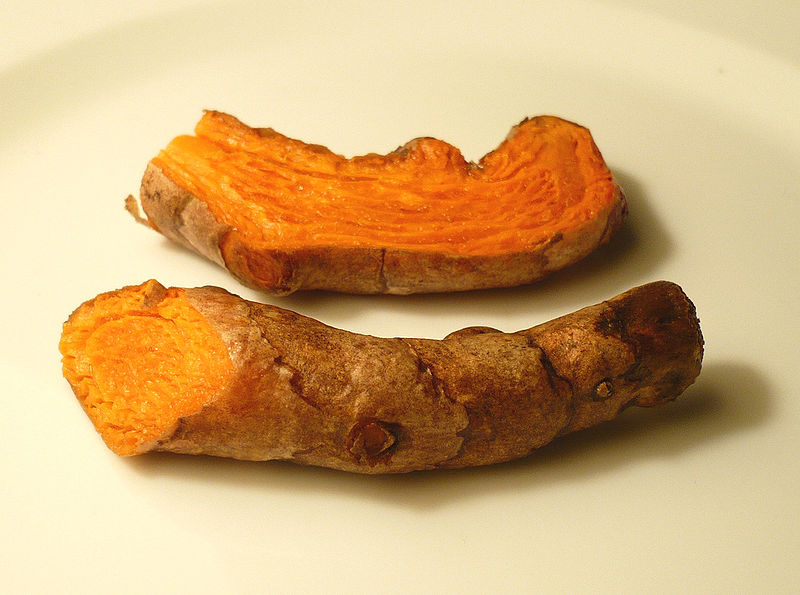By Zainab Lakhani for TwoCircles.net
I grew up eating turmeric in the various dishes that my mom crafted in our Southern California home. I did not know that turmeric had any other properties other than the ability to turn things yellow (sometimes permanently). Then I saw the weirdest thing. My father brought home (from his ranch in the valley) a pregnant goat nearing the end of her gestation period. As she lay on her side in the backyard, bleating away, my mother prepared a drink for her. One of the ingredients in it was: you guessed it, turmeric. This will save her from infection after she has given birth, explained my mother. I was confused, but hey whatever my mom thought was best, I just wanted to play with some kids.

Turmeric roots. [Photo by Wikipedia]
About 10 years later, in my cancer biology class, my professor sang the praises of a magical herb known as turmeric. I was very excited to hear that an ingredient I never even gave a second thought to, and which made up at least 5% of most of the foods my mom made, was such a powerful anti-oxidant. I told my mom right away, and she told me that back in the day where there were no ointments (or even present day in households that can’t afford ointments), turmeric was applied in a paste form on wounds to help heal them quickly. Later on, as my final project for the class, I would make a presentation on turmeric, where I would learn a whole lot more.
The turmeric Indians use in their foods is in powder form. It is added in for flavor and color. However, I am sure that it began as a medicinal additive. You see, in India, spices are very commonly found in foods. This is because the climate in India and the lack of strict sanitation exposes the people to many illnesses. The spices used in foods help kill off the bacteria that cause these illnesses.
The main component of turmeric is Curcumin. This little guy is great when it comes to preventing tumor growth. Curcumin inhibits the growth of telomerase. Telomerase is an evil enzyme that causes tumorigenesis by adding repeating sequences to the end of DNA strands. Tumorigenensis is the production of tumors, and anything that adds on DNA is a no-no when battling cancer. Inhibiting the actions of telomerase is definitely the way to go, and Curcumin can do that.

Chemical structure of Curcumin, main ingredient of turmeric
Further research and funds going into the study of turmeric and its magical ingredient Curcumin is necessary. It is a natural and non-harmful way to battle cancer. Chemotherapy, really a very archaic method, is such a debilitating treatment. It leaves the patient in no better condition than the actual cancer itself. With our advances in the world of science, medicine and therapy, more effort should be made to shut the door on the poisonous ways of chemotherapy. This can only occur when more attention is paid to natural and safe methods and a remedy is developed. For now, we can all add a dash of turmeric to our boiling pots of stew.

